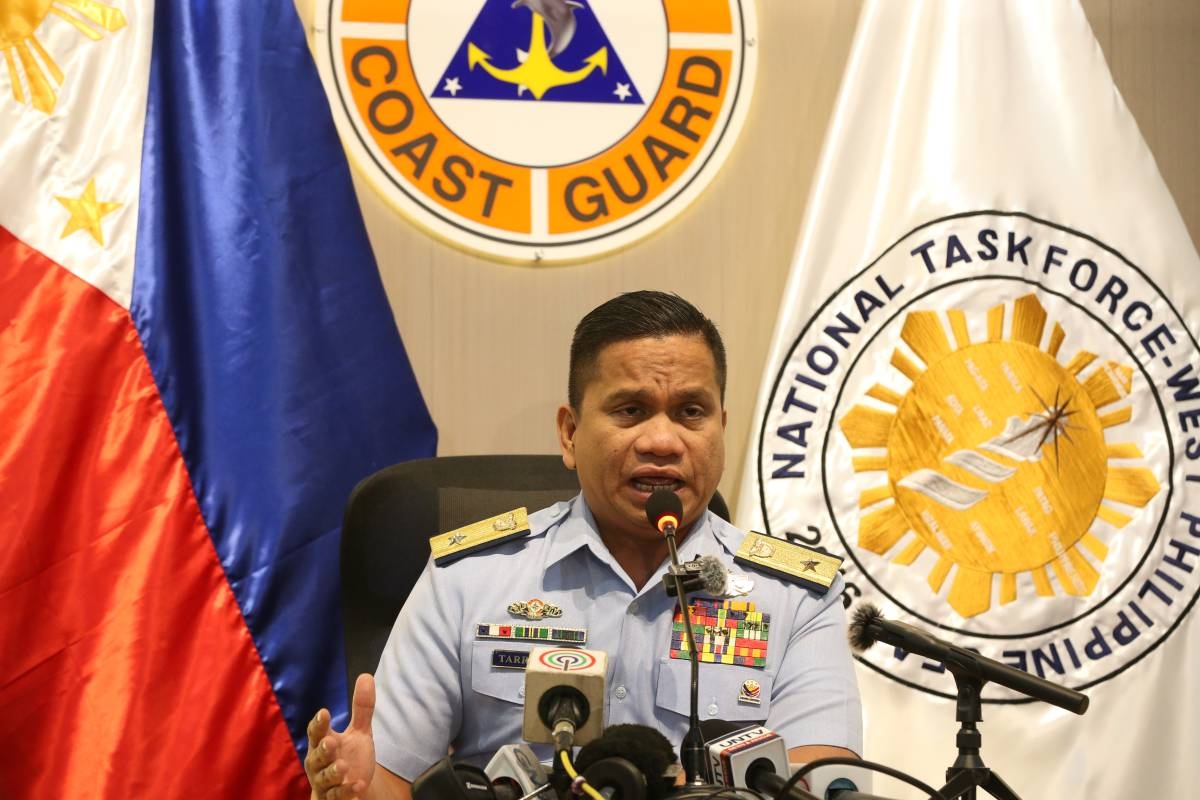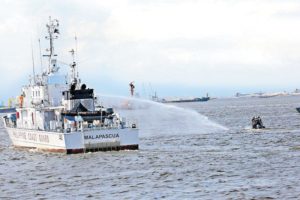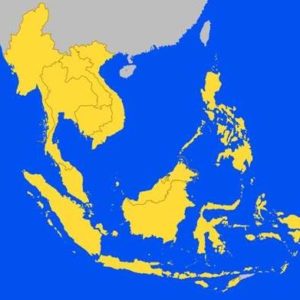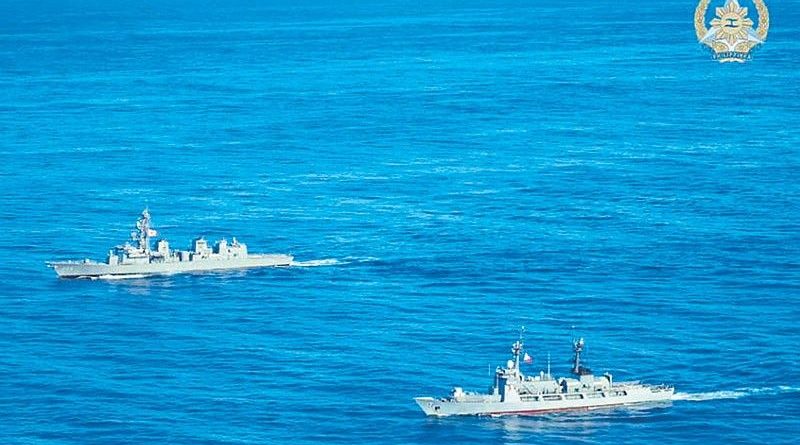ASEANEWS HEADLINE-ASIA GEO POLITICS | MANILA: Sending warship to WPS ‘an option’
The BRP Andres Bonifacio and JS Samidare sail in formation during the 5th Multilateral Maritime Cooperative Activity on Friday, within the Philippines’ exclusive economic zone in the West Philippine Sea.
.
WATCH VIDEO: https://www.youtube.com/watch?v=Vj3LvBkQAVA
NSC: PH reserves right to deploy military ships after China’s use of PLA navy in West PH Sea | AN
.

A HIGH-RANKING Coast Guard official on Saturday said the Philippines has the option to send a warship to the West Philippine Sea (WPS) after Chinese naval ships actively participated in the harassment of Philippine vessels there.
At a weekly forum in Quezon City, Philippine Coast Guard (PCG) spokesman for the WPS Commo. Jay Tarriela said President Marcos may consider sending naval ships into the country’s territorial waters as a “policy option.”
.
.,

Tarriela said that while the Philippine Navy is monitoring the situation in the WPS, it does not interfere when China Coast Guard (CCG) and the Chinese maritime militia harass Filipino fishermen, the PCG and the Bureau of Fisheries and Aquatic Resources (BFAR).

Tarriela emphasized that the decision ultimately rests with the president and the Armed Forces of the Philippines (AFP).
“If China deployed a warship to the West Philippine Sea, it could be considered a reciprocal act if the Philippines deploys its own,” Tarriela said.
“This is not a recommendation. All I’m saying is that in terms of reciprocity, that can be a policy option that can be carried out,” he added.
He said that any such move would depend on AFP policy recommendations and the commander-in-chief’s approval.
.

The encounter on Wednesday, Dec. 4, in Bajo de Masinloc (Scarborough Shoal) in the WPS was the first documented instance of the Chinese People’s Liberation Army (PLA) Navy directly participating alongside the CCG in a maritime confrontation against Philippine vessels.
Tarriela, however, highlighted the Philippine government’s cautious approach to handling the dispute, recalling previous incidents like the resupply missions to BRP Sierra Madre, a grounded Philippine Navy ship in the WPS. In those operations, civilian ships escorted by the Coast Guard were used instead of Philippine Navy vessels to avoid escalating tensions with China.
.
 Despite this measured stance, China’s recent deployment of naval assets in the region on Dec. 1 and 4 has drawn sharp criticism. Tarriela questioned the legality of China’s actions, pointing to the use of navy ships in contested waters and potential violations of international maritime laws.
Despite this measured stance, China’s recent deployment of naval assets in the region on Dec. 1 and 4 has drawn sharp criticism. Tarriela questioned the legality of China’s actions, pointing to the use of navy ships in contested waters and potential violations of international maritime laws.
The PCG official pointed out that the use of coast guard vessels, or “white hulls,” in the WPS has been a long-standing policy spanning three administrations, starting with former President Benigno Aquino III.
.

He said this strategy, born out of the 2012 standoff at Scarborough Shoal, aimed to prevent the militarization of the dispute, a principle reaffirmed by subsequent leaders.
Tarriela also cited the 2002 Declaration on the Conduct of Parties in the South China Sea, an agreement between Southeast Asian nations and China to avoid militarizing the region. However, he noted that the People’s Liberation Army Navy’s increasing involvement in the WPS complicates efforts to maintain this principle.
Tarriela pointed out that China operates a coordinated maritime strategy involving the PLAN, the CCG and the maritime militia, often disguised as civilian fishing vessels. He said while these groups appear distinct — with differences in the color of their hulls and designated roles — scholars and analysts widely agree that they operate under a single Chinese military commission.
“China’s maritime forces may project themselves as independent entities — be it through law enforcement or civilian activities — but they are, in fact, integrated into their military structure,” he said.
.
.

Ads by:
Tarriela said the unified command of China’s maritime operations allows for seamless deployment of vessels, unlike scenarios where a lack of coordination could result in operational mishaps, such as collisions between ships.
He contrasted this with the Philippines’ deployment strategy, which is focused on clearly delineated roles for the military and the Coast Guard.
Taarriela said President Marcos has repeatedly stated that the Philippines remains a “peace-loving nation” and is not seeking to provoke conflict. However, questions now loom over whether deploying a warship might be necessary to assert the country’s position in the face of China’s growing military presence.
He reported that vessels damaged in previous confrontations, including incidents of water cannoning, intentional ramming, and other collisions, have been repaired.
.

Despite these challenges, the Philippine government remains resolute. “We will continuously deploy our assets in the West Philippine Sea and stand firm in our position,” Tarriela said.
“For the past three administrations, the Philippine Coast Guard has been chosen to be deployed to the West Philippine Sea because, for the past administrations, they believed it is de-escalatory, non-provocative,” Tarriela said.
“What I’m saying is, the Philippine Coast Guard, we can never replace the Philippine Navy with the issue of territorial defense. And it is very alarming in a way that [PLAN] warships are encroaching on our own exclusive economic zone,” he added.
National Security Council Assistant Director General Jonathan Malaya said the Philippines “reserves the right” to deploy its naval vessels in the wake of China’s latest hostile act in the WPS. WITH PNA
.



 Memento Maxima Digital Marketing
Memento Maxima Digital Marketing







